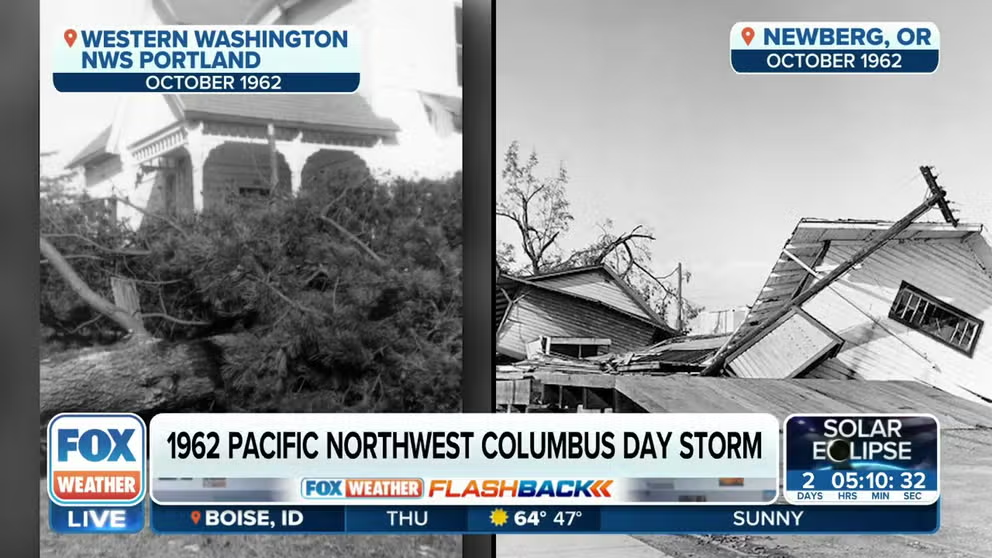Historic 'Columbus Day Storm' struck the Pacific Northwest 61 years ago with power of Category 3 hurricane
'With little fear of exaggeration, it can be stated that the Columbus Day Storm of 1962 was the most powerful windstorm to strike the Pacific Northwest in the 20th century,' says noted Northwest windstorm researcher Dr. Wolf Read.
Great Columbus Day Windstorm struck Pacific Northwest 61 years ago Thursday
On Oct. 12, 1962, the greatest windstorm in the Northwest's recorded history struck Washington and Oregon with the power of a Category 3 hurricane with widespread gusts over 100 mph leaving dozens dead.
PORTLAND, Ore. – It was 61 years ago Thursday that a massive windstorm struck the Pacific Northwest with the ferocity of a Category 3 hurricane, leaving dozens dead, a wide swath of damage and an indelible mark on the weather history of the region.
"With little fear of exaggeration, it can be stated that the Columbus Day Storm of 1962 was the most powerful windstorm to strike the Pacific Northwest in the 20th century," noted Northwest windstorm researcher Dr. Wolf Read wrote on his Storm King research site. "Certainly, no windstorm since has generated as much widespread devastation as the Big Blow, not even close."
The storm brought triple-digit wind gusts across much of Oregon and even into parts of Washington as the remnants of a former typhoon crashed ashore on Oct. 12, 1962. Newport, Oregon, recorded a peak gust of 138 mph, while Corvallis hit 127 mph, Portland's Morrison Bridge reported 116 mph, and Portland's airport hit an estimated gust of 104 mph.
Even Washington felt the wrath, with Renton recording a gust of 100 mph and Bellingham reaching 98 mph. Seattle's gusts ranged from 58 to 66 mph, but a gust of 81 mph was reached just north of the city in Everett.
Damaging gusts of the massive storm even stretched into Northern California as Crescent City hit 69 mph while San Francisco hit 63 mph. There were 31 who died in Washington and Oregon, and hundreds more were hurt.
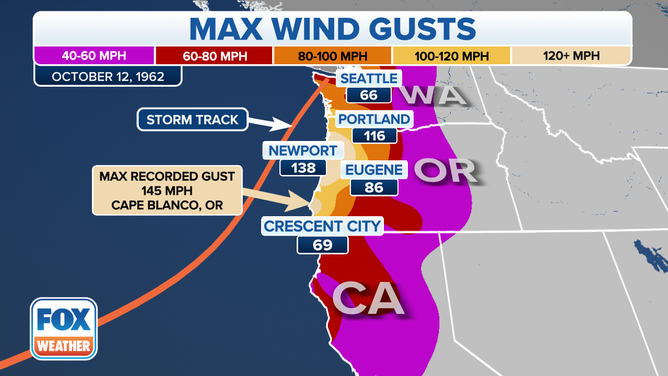
(FOX Weather)
Storm began as Typhoon Freda
While the Columbus Day storm was not a tropical cyclone when it struck the Northwest, it had tropical roots.
The storm began its life as Typhoon Freda in the Western Pacific. The typhoon eventually fizzled, but its remnants took the long journey across the Pacific Ocean, undergoing explosive development as it feasted off new storm energy off the Northern California coast and barreled into Oregon with a fury not before seen in the region's recorded history.
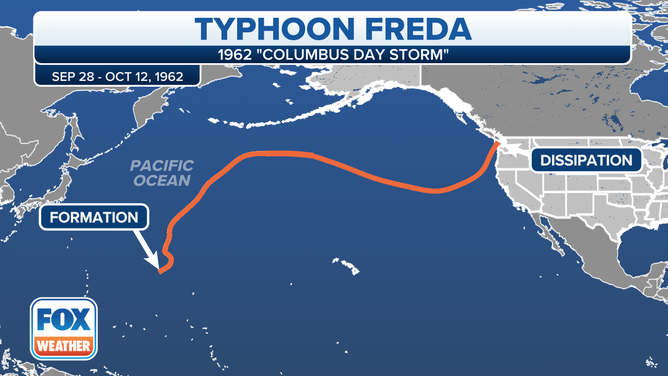
(FOX Weather)
"The abundant energy that arrived with the tropical system may partly explain the level of violence achieved during the Big Blow," Read wrote. "And this tropical influence suggests that the storm of 1962 be placed in its own category. A lone, dark overachiever whose closest cousins may be those powerful extratropical storms experienced on the East Coast, such as post-landfall Hurricane Hazel of 1954."
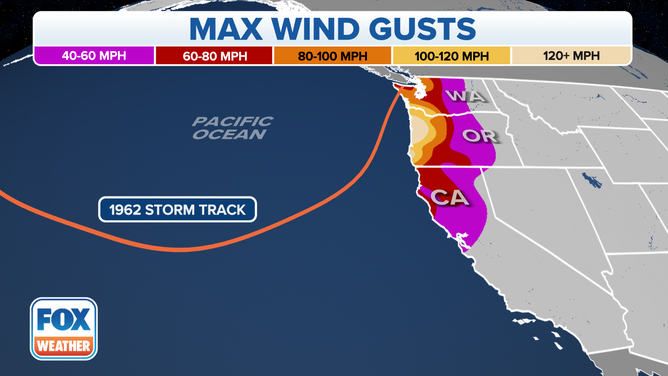
(FOX Weather)
Oregon State Climatologist Kathie Dello said in a post commemorating the event's 50-year anniversary that the storm's unique pressure gradient angle combined with western Oregon's topography to channel the winds, leading to the extreme damage.
Undamaged homes 'were the exception, not the rule'
Read said the gusts measured during the event relative to sustained wind speeds were more on par with hurricane damage as opposed to typical mid-latitude storms that pepper the region every fall and winter. The storm's central pressure of 960 millibars would match that of a Category 3 hurricane.
Read said the winds were so strong across the Willamette Valley that undamaged homes "were the exception, not the rule." In the Portland suburb of Lake Oswego, 70% of its homes suffered some sort of wind damage in the storm, Read said.
The region lost 11.2-billion board feet of timber, and the number of 1,000-year-old trees felled suggests the Columbus Day storm may have been the wind event of the millennium.
Overall, damage across the three Western states and Canada's British Columbia was estimated at around $230 to $280 million in 1962 dollars, putting the storm in comparable levels to major hurricanes of the time period, including Hurricane Audrey in 1957 ($150 million) and Hurricane Donna in 1960 ($387 million).
'Abandoned Station'
The gusts in Corvallis, Oregon, reached such extreme levels that weather observers had to abandon the station to seek safer shelter. The weather logs note a gust of 110 knots (127 mph) then "ABANDONED STATION."
Upon return, observers noted several hours of weather would go unreported due to lack of power and "instruments demolished."
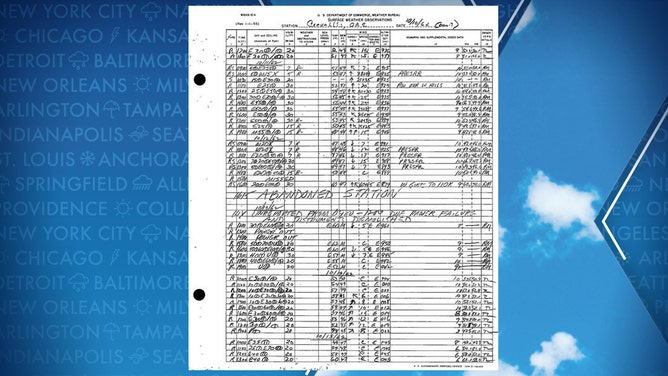
Weather log from Corvallis, Oregon, during the great wind storm on Oct. 12, 1962.
(Oregon Climate Service)
Read says it wasn't just the jaw-dropping wind speeds, but the suddenness of their onset.
"The sudden violence of the wind compelled many people to take cover in their homes or basements, a lasting memory, and the sheer magnitude of destruction, in literally all categories of accounting, puts this storm far above any other," Read said.
